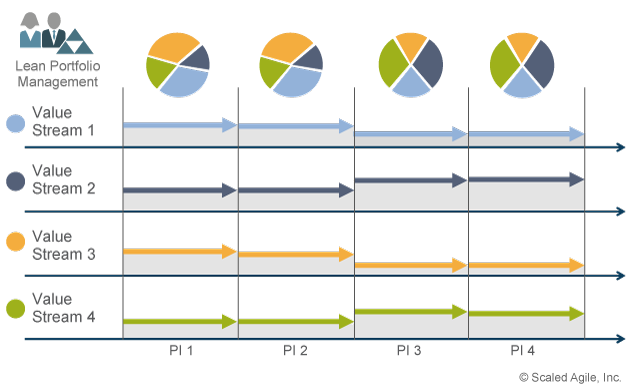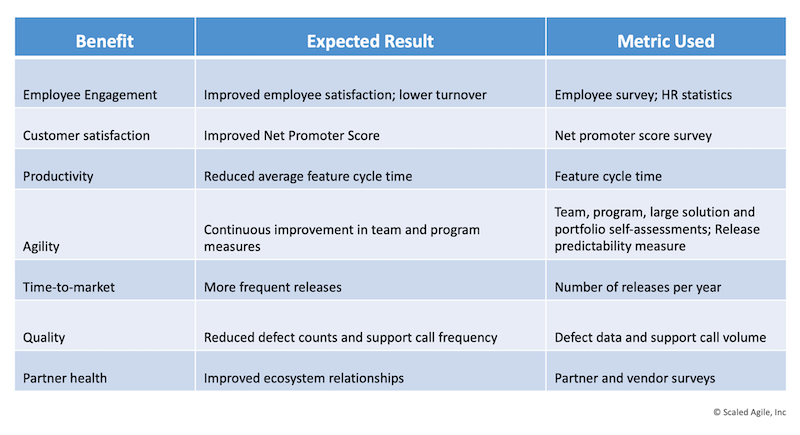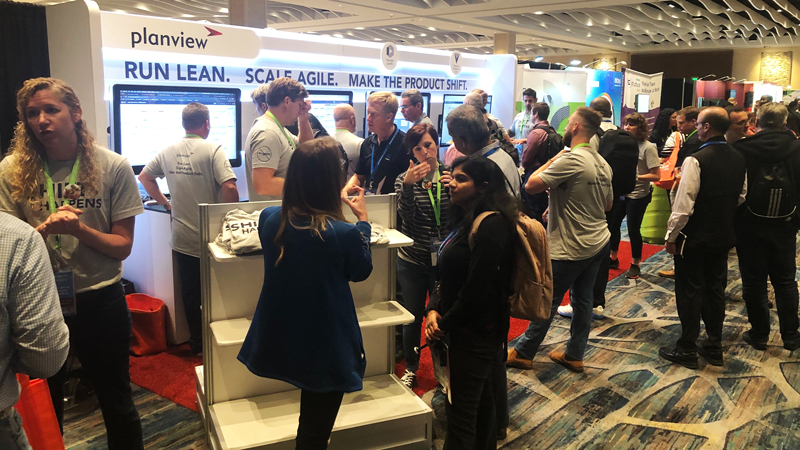
This blog is part of a series on Lean Portfolio Management (LPM). If you haven’t already, we recommend reading parts one through three first, which you can find here:
- Part 1: What is Lean Portfolio Management?
- Part 2: Lean Portfolio Management: Lean Budgets and Investment Funding
- Part 3: Lean Portfolio Management Operations: An Agile Approach
Defining, communicating, and aligning strategy across a Lean-Agile portfolio is no small feat. After all, truly Lean-Agile organizations are designed to be largely decentralized. Unlike in traditional organizational structures, in which decision-making powers are concentrated at the ‘top’ of the organization, in Lean-Agile organizations, this power is distributed. Various stakeholders throughout the organization are involved in these three key collaborations, the first two we discussed in previous posts:
- Strategy and investment funding
- Agile portfolio operations
- Lean governance
The people who fulfill the LPM function have various roles and titles and are often distributed throughout the organization’s hierarchy:
- Enterprise executives, business owners, and enterprise architects work to connect the portfolio to enterprise strategy, maintain a portfolio vision, fund value streams (instead of projects) and establish portfolio flow.
- An Agile PMO (when working closely with Release Train Engineers, Scrum Masters and other organizational leaders) can help support Agile organizations through coordinating value streams, supporting program execution, and driving operational excellence by facilitating Communities of Practice and a Lean-Agile Center of Excellence.
The third, and equally critical type of collaboration that must take place in Lean Portfolio Management is Lean governance—how decisions are made across the portfolio(s). Business leaders, portfolio managers, value stream owners and the Agile PMO have to work together to:
- Forecast and budget dynamically across the enterprise
- Measure portfolio performance
- Coordinate continuous compliance
Let’s dive deeper into these key responsibilities.
Forecast and Budget Dynamically
LPM strategy and investment funding practices are designed to support self-organizing, self-managing Agile teams, organized into value streams. Lean budgeting allows for the autonomy necessary to enable agility, while also providing accountability to enable alignment across the portfolio.
Here’s how that works: While value streams are self-organizing and self-managing, they don’t launch or fund themselves. Budgets are allocated to value streams at the portfolio level, to ensure alignment with larger organizational strategy.
Value streams are provided with budgets, with guardrails to define spending policies, guidelines, and practices for that portfolio. Value stream budgets are adjusted at the portfolio level, so that they can evolve to best meet changing business needs.

The Lean budgeting approach removes the PMO from the project level, providing Agile Release Trains (ARTs) with more autonomy for faster, better decision making. ARTs can self-organize to optimize resource efficiency, which also results in greater morale and job satisfaction. Small changes to the budget can be handled at the project level without having to escalate to management, which frees up management’s time for more strategic work.
Budgeting by value stream also makes it easier to measure organizational effectiveness, by simplifying the data collection required to assess performance. Budgets are typically fixed across a PI, but teams have the ability to prioritize or delay completion of work based on their actual capacity and are not penalized for not completing work according to inaccurate estimates. This means that teams are able to incorporate new information and learnings in real-time.
However, it’s important that these adjustments align with other organizational structures, so that they don’t unintentionally inhibit agility. This is why most organizations choose to adjust budgets dynamically according to the timelines established by PI/quarterly planning (as seen in the figure below).
 (source)
(source)
Adjusting budgets according to this timeline ensures that:
- Spending is not fixed for too long (thus limiting agility)
- Budgeting/funding decisions align with value stream objectives
- Budgeting/funding decisions support stability (in an Agile way)
Measure Lean Portfolio Performance
Another key function of Lean governance is to be able to measure performance across the portfolio. This is important to ensure that Lean-Agile practices (or the way they’re implemented) are actually contributing to desirable outcomes.
Metrics are needed to ensure that progress is made across the portfolio and a comprehensive, customer-focused set of success criteria is established. Success criteria may include:
- Employee engagement
- Customer satisfaction
- Productivity
- Agility
- Time-to-market
- Quality
- Partner health (source)
The tricky thing is that the conventional metrics for measuring portfolio performance don’t provide feedback quickly enough to inform changes in real-time. Metrics such as ROI or market penetration are lagging economic indicators as opposed to leading indicators of progress. Lean-Agile governance requires a different set of metrics in order to quickly validate assumptions and increase learning.
Innovation accounting is a term used to describe the type of data collection that Lean-Agile organizations need to embrace in order to support agility. The Financial Times defines innovation accounting as, “… the rigorous process of defining, empirically measuring and communicating the true progress of innovation—such as customer retention and usage patterns—whether for start-up companies, for new productions or business units within established companies.”
This chart from Scaled Agile, Inc. shows examples of innovation accounting at work:

(source)
Those responsible for Lean-Agile governance should work to automate the collection of these key metrics to inform adjustments to portfolio strategy. Some Lean-Agile enterprises hold a regular ‘portfolio sync’ meeting to gain visibility into how the portfolio is performing, and identify opportunities for improving value stream execution, investment decisions, continuous improvement efforts, and more. You can learn more about Lean portfolio metrics here.
Coordinating Continuous Compliance
Every organization on earth is subject to compliance requirements within the context that it operates. Internal and external financial auditing requirements, industry legal and regulatory guidelines, and other obligations impose significant limits on solution development and operations and have to be considered across value streams. This is another responsibility of Lean-Agile governance within LPM.
Traditionally, compliance (like testing) tends to be deferred to the end of the development cycle, thought of as a sort of hoop to jump through before releasing something into the world. However, this approach to compliance is largely inefficient and can put organizations at great risk of costly rework, and even regulatory or legal exposure.
In a Lean-Agile organization, coordinating compliance with relevant standards is a centralized, proactive, continuous activity, viewed within the scope of Lean governance. Business leaders, portfolio managers, Enterprise architects, value stream owners and the Agile PMO work together to ensure that compliance information is viewed and understood prior to the planning or execution of work.
Success with Lean Portfolio Management
Adaptability, agility, and speed are the key ingredients to success in a world where the only constant is change. Enterprises are at particular risk for disruption because of their inherent complexity—but Lean Portfolio Management can illuminate the path toward enterprise agility.
The LPM function provides a set of three key collaborations—strategy and investment funding, Agile portfolio operations, and Lean-Agile governance—that are intended to align leadership around organizational strategy. These collaborations can bring visibility and transparency around the key decisions that can make or break an enterprise’s success.
To learn more about Lean portfolio management, we recommend downloading the full whitepaper, “Lean Portfolio Management for the Enterprise.” There, you will find greater detail on the topics discussed in this series.





